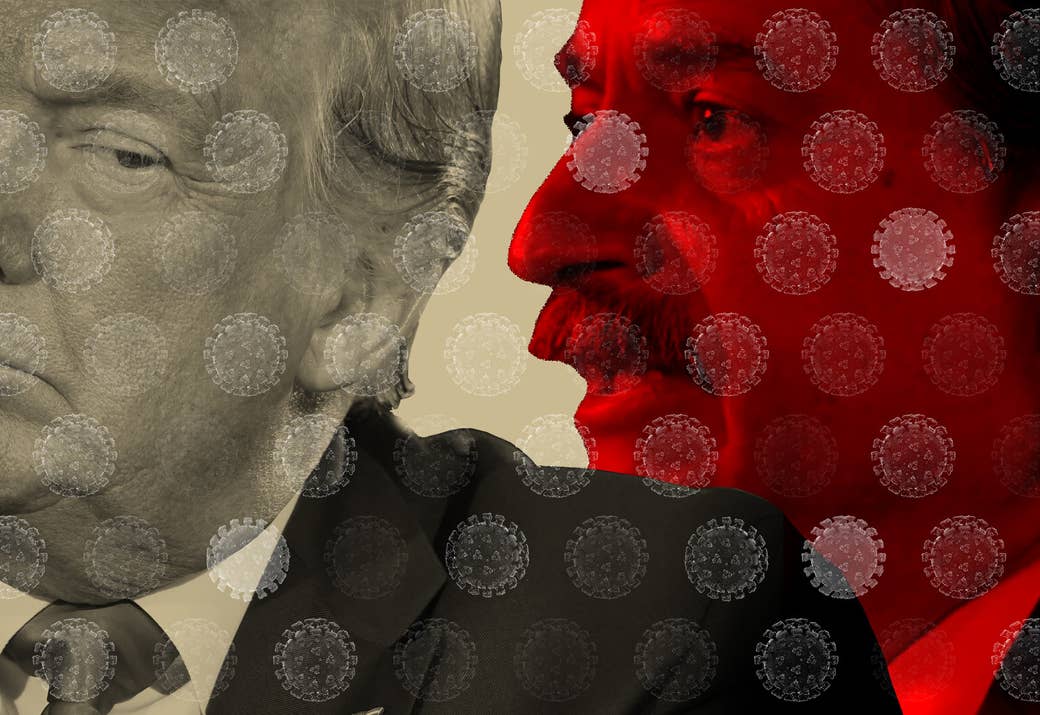
Stanford University scientist John Ioannidis has declared in study after study that the coronavirus is not that big of a threat, emboldening opponents of economic shutdowns — and infuriating critics who see fundamental errors in his work.
But even before the epidemiologist had any of that data in hand, he and an elite group of scientists tried to convince President Donald Trump that locking down the country would be the real danger.
In late March, as COVID-19 cases overran hospitals overseas, Ioannidis tried to organize a meeting at the White House where he and a small band of colleagues would caution the president against “shutting down the country for [a] very long time and jeopardizing so many lives in doing this,” according to a statement Ioannidis submitted on the group’s behalf. Their goal, the statement said, was “to both save more lives and avoid serious damage to the US economy using the most reliable data.”
Although the meeting did not happen, Ioannidis believed their message had reached the right people. Within a day of him sending it to the White House, Trump announced that he wanted the country reopened by Easter. “I think our ideas have inflitrated [sic] the White House regardless,” Ioannidis told his collaborators on March 28, in one of dozens of emails that BuzzFeed News obtained through public records requests.

But at this critical juncture, many other public health experts believed that the United States did not have the luxury of waiting for perfect data. In the face of a life-threatening pandemic, they wanted states to order residents to stay at home, immediately, to prevent health care systems from getting crushed.
Ioannidis’s ideas “were scientifically untenable at that time, and untenable from the perspective of decision-making especially,” Marc Lipsitch, a Harvard T.H. Chan School of Public Health epidemiologist, told BuzzFeed News.
If you have tips about the coronavirus, reach out to this reporter at stephanie.lee@buzzfeed.com or stephaniemlee@protonmail.com.
And the group’s attempt to convey these preliminary ideas directly to the White House is highly unusual for scientists, said Sheila Jasanoff, a Harvard Kennedy School professor who studies the role of science in politics.
“It creates the impression that the work that the scientists are intending to do will be shaped by a political purpose, maybe even before they have started doing the work,” Jasanoff said. Their decision to push an untested theory to influence federal policy, she added, went “against the ethos of science.”
Ioannidis assembled at least eight scientists to try to meet the president. Two of them told BuzzFeed News that, if a meeting did happen, they would make it clear they did not oppose widespread lockdowns. But others, including a Nobel laureate, feared that their consequences would be greater than the threat of the virus. Several were already harnessing their prominent platforms to sound the alarm in media appearances and meetings with politicians.
Their leader, Ioannidis, would go on to conclude in a series of studies that the virus posed a low risk to most people, and hold them up as evidence that lockdowns are an overreaction. Some of that work has been fiercely called into question, however, and observers have wondered if the iconoclast, lionized for his pioneering critiques of biased and overhyped science, is trying to prove a predetermined conclusion. Now, the emails reveal that before Ioannidis had collected any data, he was so assured about the dangers of lockdowns that he felt compelled to personally warn the president.
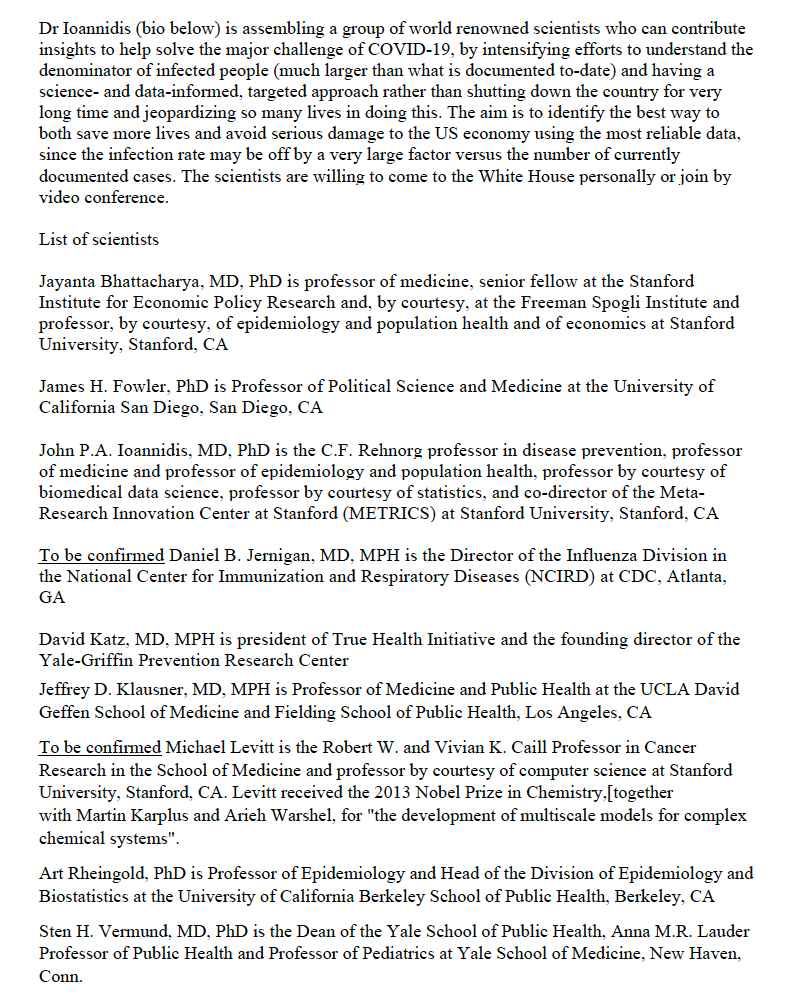
Ioannidis did not respond to multiple requests for comment.
Shelter-in-place orders and other measures would ultimately prevent millions of cases and deaths around the world, recent modeling studies suggest. But in the US, a handful of states avoided stay-at-home orders and others lifted them when infections were still rising, often pressured by the president himself. In the absence of robust testing and contact tracing, the virus is now spreading with alarming speed across the West and South.
“It was clear that the US didn’t turn the volume up on policies the way that everyone else did,” said Solomon Hsiang, director of UC Berkeley’s Global Policy Laboratory, who estimates that social distancing policies averted 60 million infections nationwide. “This has been one giant slow-motion train wreck.”
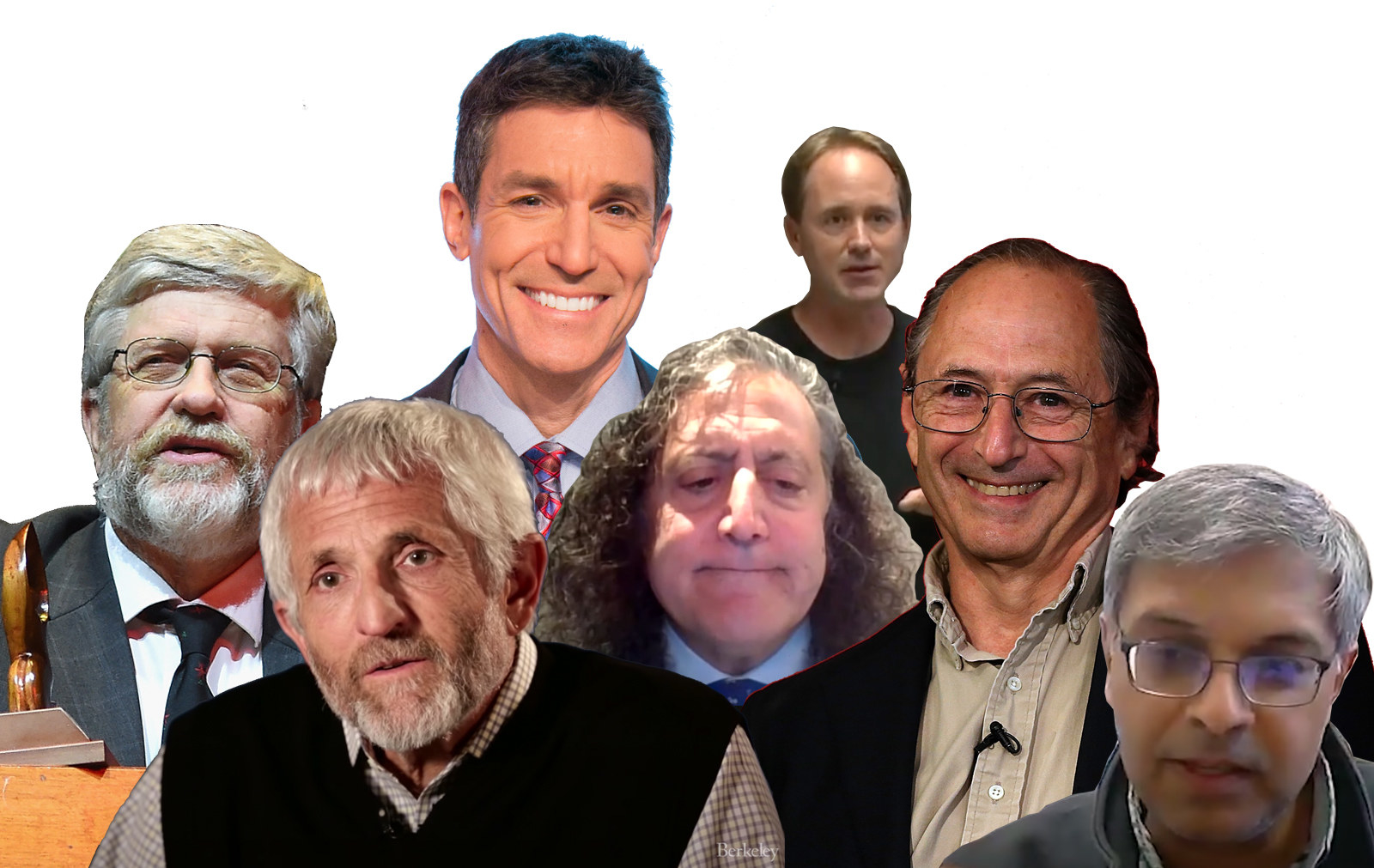
2. The Scientists
By mid-March, a global pandemic was officially underway. In Wuhan, China, and parts of Italy, staggering caseloads were overwhelming hospitals and thousands were dying. Jarred into action by a new prediction that 2.2 million Americans could die, Trump issued national social distancing guidelines for the next 15 days. Businesses, schools, and restaurants went dark, and soon-to-be historic numbers of workers — now numbering about 30 million — started collecting unemployment.
The Bay Area was the first to implement a strict shelter-in-place order on March 17. That day, Ioannidis warned in a Stat op-ed that “locking down the world with potentially tremendous social and financial consequences may be totally irrational.”
Due to critically limited testing, the public did not know how much of a threat the virus posed. But Ioannidis suggested that its true fatality rate could be so low, it could be even “lower than seasonal influenza.” Based on data from the quarantined Diamond Princess cruise ship, he predicted that roughly 10,000 Americans could die. In contrast, he argued, lockdowns spanning “months, if not years” would endanger “billions, not just millions” of lives.
Over the following days, Ioannidis grew more vocal in a flurry of interviews and scientific commentary. And his Stat op-ed caught the eye of many conservative commentators, from Ann Coulter to Fox News personality Lisa Boothe. Bret Stephens cited it in a New York Times column titled “It’s Dangerous to Be Ruled by Fear.” It also circulated among West Wing aides, Bloomberg reported.
But Ioannidis wanted to make his case to the president directly, according to the emails. Starting around March 23, he began rounding up a cohort of vocal and influential lockdown skeptics to help him do so.
“I was told that they can arrange for the President to meet with 5-7 top scientists,” Ioannidis wrote in one email, with the subject line “meeting with the President in D.C.” He added, “I think you can make a huge difference in this critical time.”
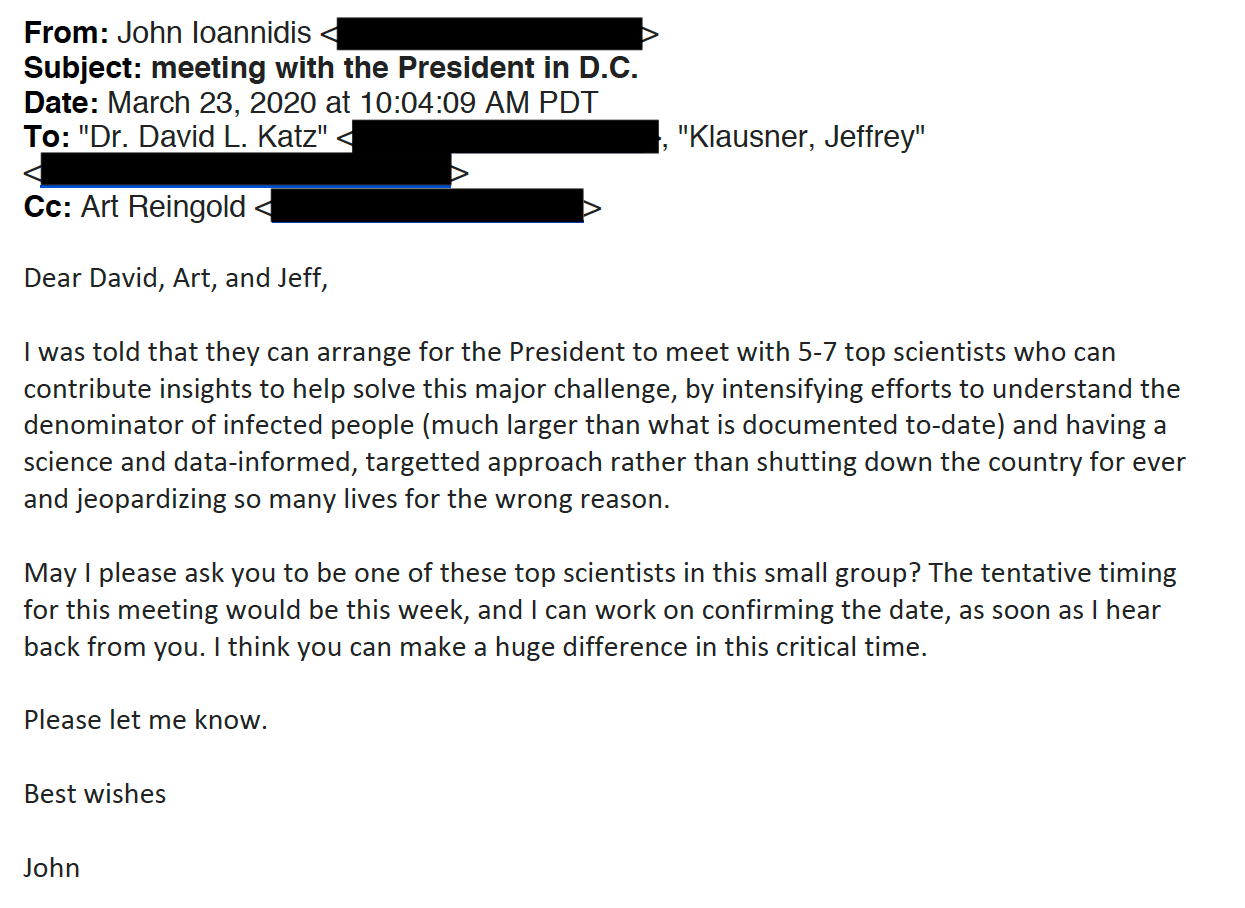
One invitee was David Katz, a doctor and a former Yale instructor who now runs a nonprofit called True Health Initiative. In a provocative New York Times op-ed titled “Is Our Fight Against Coronavirus Worse Than the Disease?” he argued that society should protect, treat, and keep at home the “especially vulnerable,” such as older people, and allow everyone else to build “herd immunity.” Without this strategy, he cautioned, “this near total meltdown of normal life — schools and businesses closed, gatherings banned — will be long lasting and calamitous, possibly graver than the direct toll of the virus itself.”
Those ideas were cited by Thomas Friedman, the high-profile New York Times columnist, including in an open letter to Trump. New York Gov. Andrew Cuomo referenced Katz at press briefings where he expressed skepticism about widespread quarantines. Katz told BuzzFeed News that he spoke with both Cuomo and Ron DeSantis, Florida’s governor, early on.
Other epidemiologists and health experts vehemently disagree that the pursuit of herd immunity to the coronavirus would be ethical or achievable. They point out that though many people may have mild infections, without a vaccine, countless others would needlessly become severely sick and die.
And Swapnil Mishra, a public health researcher at Imperial College London, said that while mass testing and identifying high-risk people is “ideal,” testing failures in the US meant that was not a realistic option in March. “We’re talking about a time when [US] testing capacity was not even one-tenth of what it is today,” Mishra said.
Aside from Katz, Ioannidis’s entourage included Jeffrey Klausner, a professor of medicine and public health at UCLA who insisted on local TV that “there’s no indication, absolutely, for this nation- or statewide shutdown.” There was also Michael Levitt, a chemistry Nobel Prize winner, who developed a model that predicted the pandemic wouldn’t be that bad. “The real situation is not as nearly as terrible as they make it out to be,” the Stanford biophysicist told the Los Angeles Times.
Another Stanford faculty member in the group, professor of medicine Jay Bhattacharya, cowrote in a widely circulated Wall Street Journal op-ed that there was “little evidence” to warrant shelter-in-place orders and quarantines.
One member who had not gone public with his views was James Fowler, a UC San Diego professor who claims to be “the most-cited political scientist of any who has received their PhD this century.” He had emailed Ioannidis in the wake of his Stat op-ed with the subject line “I agree: we are making a terrible mistake. How can I help?” Ioannidis replied, “I have heard from hundreds of great scientists in support of my views,” and added, “I am trying to see how we can organize efforts better, there is too much at stake, we will be in touch.”
Collectively, the scientists hoped to reach a president who, less than a week into the national social distancing guidelines, appeared to already be eager to lift them. “WE CANNOT LET THE CURE BE WORSE THAN THE PROBLEM ITSELF,” Trump had tweeted the night of March 22. “AT THE END OF THE 15 DAY PERIOD, WE WILL MAKE A DECISION AS TO WHICH WAY WE WANT TO GO!”
His apparent concern was that between cratering stocks and record unemployment claims, the next Great Depression was around the corner. “We can’t shut in the economy,” Larry Kudlow, Trump’s top economic adviser, told Fox News. “The economic cost to individuals is just too great.”
But as deaths rose into the hundreds, a growing number of states — nine, by March 23 – were instructing residents to stay at home anyway. Things were starting to look dire in New York City, where Mayor Bill de Blasio said the federal government was sending 400 emergency ventilators. The city, he said, was “going to literally be in a race against time.”

3. The Statement
On the evening of March 24, Ioannidis told the group that he had submitted their letter to the White House. His pitch for a meeting — either in DC, or over videoconference — reiterated what he had been saying publicly for days.
“Dr Ioannidis (bio below) is assembling a group of world renowned scientists who can contribute insights to help solve the major challenge of COVID-19, by intensifying efforts to understand the denominator of infected people (much larger than what is documented to-date) and having a science- and data-informed, targeted approach rather than shutting down the country for very long time and jeopardizing so many lives in doing this,” the statement read.
It continued: “The aim is to identify the best way to both save more lives and avoid serious damage to the US economy using the most reliable data, since the infection rate may be off by a very large factor versus the number of currently documented cases.”
This statement didn’t capture each member’s full views of how the country should proceed. Klausner, for instance, told BuzzFeed News that he thought shelter-in-place orders should have lasted no more than 10 days while the hardest-hit local areas prepared, and Katz said that, prior to implementing his strategy, shutdowns would likely still be “fairly” widespread. But both of them said they stood by the statement’s opposition to a “one-size-fits-all” approach.
Bhattacharya, Levitt, and Fowler, who did not return requests for comment, appear to have been keen participants. As Ioannidis relayed in one email, “All three of them had wrtten [sic] to me to say how they enthusiastically agreed with what I proposed.”
In contrast, two other members told BuzzFeed News they were not in the anti-lockdown camp. Arthur Reingold, head of UC Berkeley’s epidemiology and biostatistics division, said that he was recruited because he “did not agree with the underlying premise regarding ‘shelter in place’ as being unwise in the context of the pandemic in the US.”
Sten Vermund, dean of the Yale School of Public Health, said, “I’ve been arguing with this crowd from the beginning of this pandemic.” He cowrote a letter to the New York Times lambasting Katz’s endorsement of herd immunity, and went on a podcast to debate Ioannidis over the importance of lockdowns.
“That I was part of the group will be interpreted by some that I supported their point of view, which I did not,” Vermund said. “Not in March or April or now.”
He agreed to join, he said, to ensure Trump got accurate guidance. “I just thought, ‘Look, if they’re inviting me and they know how I feel, I ought to go because their point of view is not nuanced and I don’t think it’s going to be good advice for the president to take,’” Vermund said. “I was going to tell him to do it intelligently and to definitely do lockdowns.”
What did unite the group — “the one thing all of us could agree on,” as Vermund put it — was a desire for more comprehensive testing.
On the day Ioannidis told the group he sent in the statement, there were signs the White House was backing away from lockdowns: Trump announced that he wanted the country “raring to go by Easter,” or April 12. (Anthony Fauci, the nation’s top infectious disease expert, hastened to add that the timeline was “really very flexible.”)
But as European nations issued extended lockdown orders and UK government officials warned they could last for up to six months, Trump changed course, extending the social distancing guidelines to the end of April. By the end of March, 32 states were telling people to stay at home.
“Given the about face yet again from the White House with new the [sic] 30 day plus national shut down, seems like our thoughts may have hit a wall and bounced back?” Klausner asked over email.
“Frustrating indeed,” Ioannidis replied. “I am still struggling to see whether we can find a way to get in the White House.”
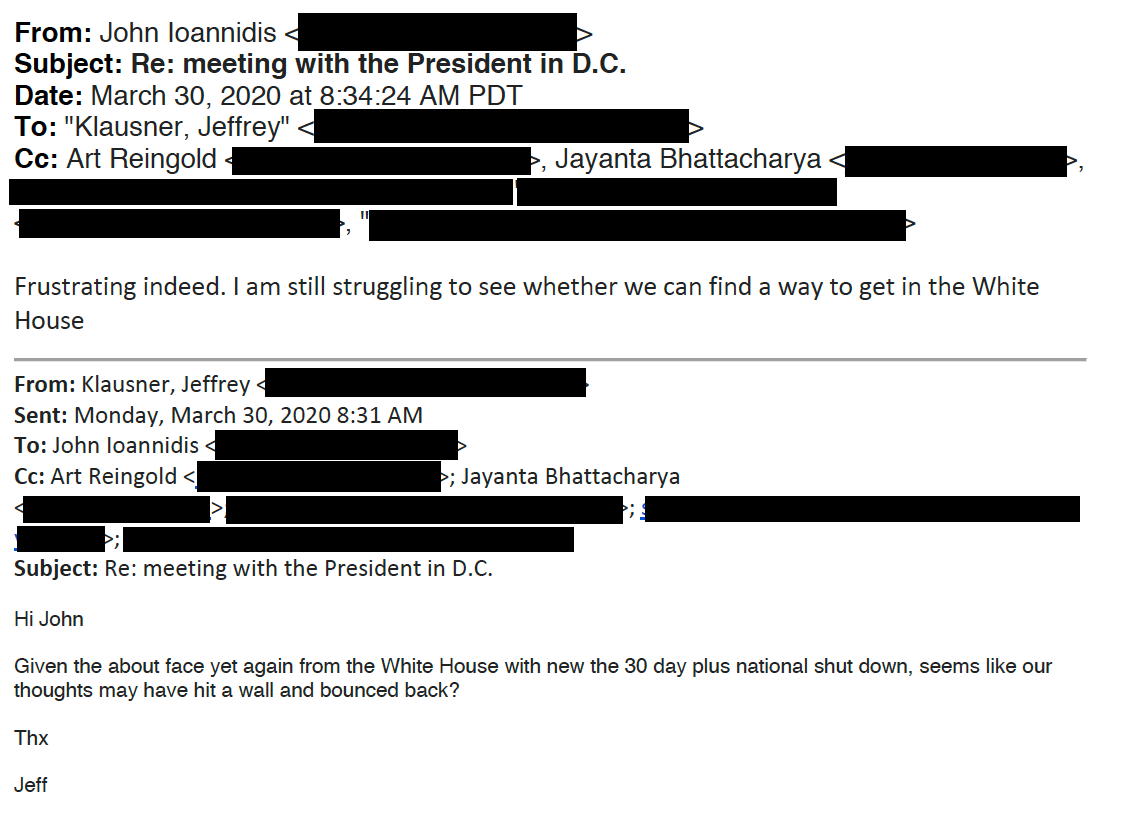
But as days went by, it was clear that the highly anticipated meeting was not going to happen. The email thread died off.
White House spokesperson Sarah Matthews said that Trump “has always acted on the recommendations of his top public health experts throughout this crisis as evidenced by the many bold, data-driven decisions he has made to save millions of lives.”
She added, “As the President has also said, the cure cannot be worse than the disease and it’s well-documented the impact staying shut down would have, including suicide, substance abuse, and more.” She did not answer questions about whether Ioannidis’s theories influenced the president’s decision-making.
4. The Studies
As March turned to April, Ioannidis began collecting data to test the theory he’d been putting forward for weeks.
On April 3 and 4, more than 3,000 Silicon Valley residents lined up to have their blood drawn for a study overseen by Ioannidis, Bhattacharya, and other Stanford researchers. The goal was to look for antibodies indicating if they’d already been infected by the coronavirus.
On April 12, before they released their results, some of the team went on the Fox News show The Next Revolution to promote a “science-based” plan to reopen “safely, but soon.” Also on air with them that night was David Neeleman, the founder of JetBlue and a vocal opponent of lockdowns. Later, a whistleblower complaint filed to Stanford would reveal that he was an undisclosed sponsor of the research, and allege that he “potentially used financial incentives to secure cooperation from” an external scientist concerned about the study’s test.
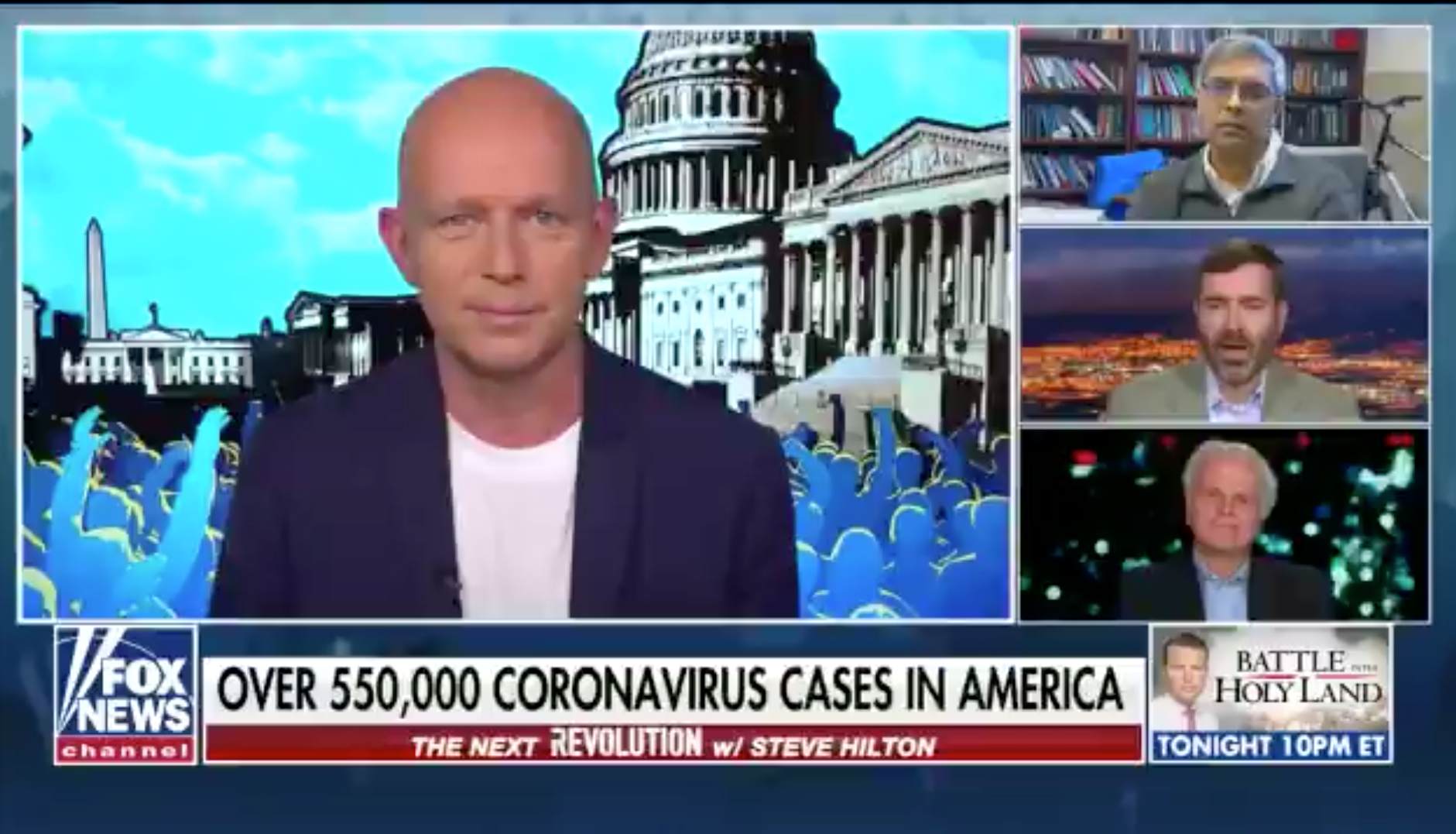
When BuzzFeed News reported on the complaint in May, the airline executive denied that he influenced the study in any way or that he meant to pressure the scientist. Ioannidis also said that he did not know who had anonymously contributed funding through Stanford’s development office. But in a March 28 email to academics around the country, obtained by BuzzFeed News, Ioannidis mentioned that he and his eventual coauthors had “tentative interest frm [sic] a billionnaire [sic].”
Five days after the Fox News appearance, the antibody study went online as a non-peer-reviewed preprint. It reported that Silicon Valley’s number of infections was staggeringly higher — 50 to 85 times more — than the official count, putting the virus’s fatality rate as low as 0.12% to 0.2%. In the media, Ioannidis and other coauthors likened that rate to the flu’s. (It was later revised to 0.17%.)
The paper was berated by scientists for severe statistical and other problems — and feted on the right, which saw it as justification for reopening the economy. That day, Trump cheered on protesters making that demand at statehouses. “LIBERATE MICHIGAN!” he tweeted. “LIBERATE MINNESOTA!”
And in May, Ioannidis presented a picture of the virus’s deadliness based on antibody study data from around the world, including his Stanford study. This preprint was roundly criticized for including groups of patients who don’t reflect the general public and, in earlier versions, omitting data from large groups with higher fatality rates, among other errors.
Ioannidis most recently pegs the true fatality rate at 0.27%. That’s significantly lower than 0.68%, an estimate produced by researchers in Australia. That work is cited by the WHO and the CDC.
Overall, these and other coronavirus studies he’s released have supported the theory he put forth in March: For most people, the virus is a minor threat. With this evidence in hand, Ioannidis has brushed off his critics.
Days after the antibody study was released, Ioannidis told the Wall Street Journal’s opinion section that people who made “big statements about ‘lockdowns save the world’” were “immature.” “It’s attacking studies with data based on speculation and science fiction,” he said. More recently, he has cited his research to claim that while lockdowns are dangerous, they may have been justified “initially,” without specifying a time frame.
In yet another paper last month, one of his 60-plus academic articles so far this year, Ioannidis this time took aim at incorrect COVID-19 predictions. He pointed out that hospitals had overestimated their numbers of coronavirus patients, to the detriment of others in need of care.
He did not mention a prediction of his own, made in March, that the coronavirus could cause 10,000 deaths in the US. As of late July, the death toll is above 140,000, higher than anywhere else in the world.
“Despite involving many excellent modelers, best intentions, and highly sophisticated tools,” Ioannidis wrote, “forecasting efforts have largely failed.”
He was right. ●
